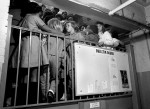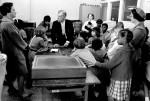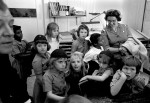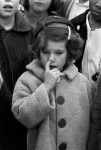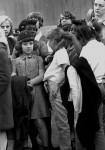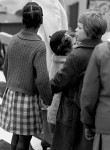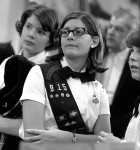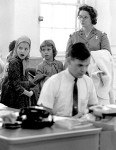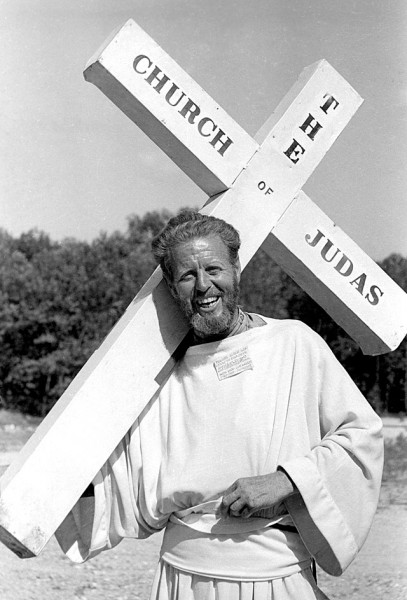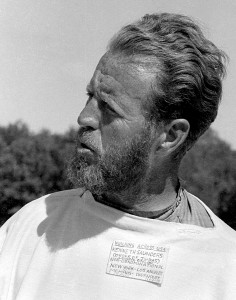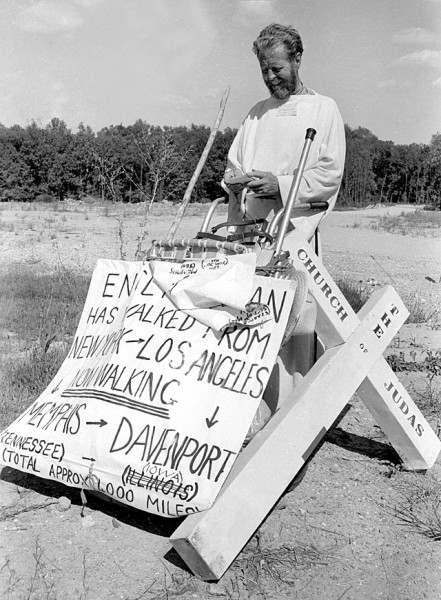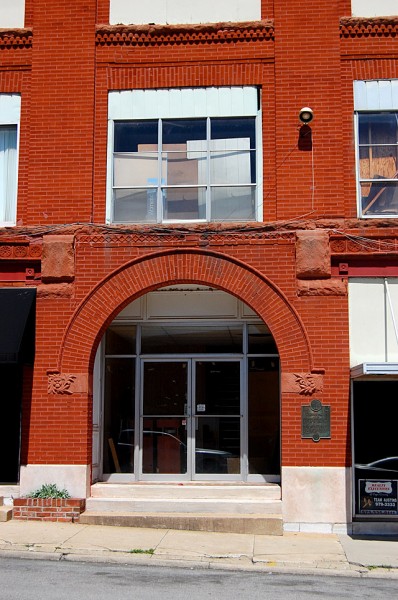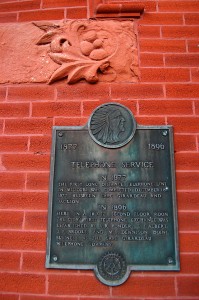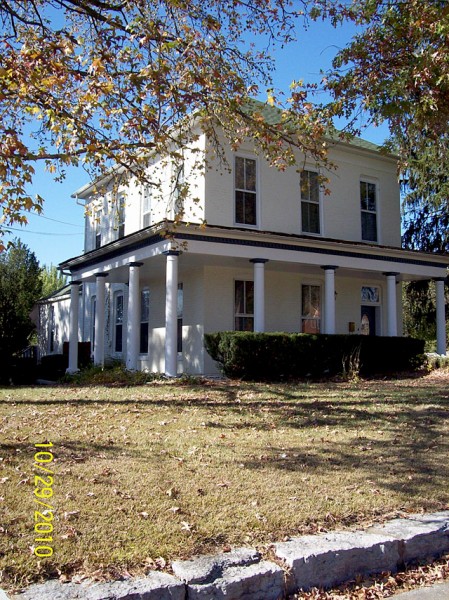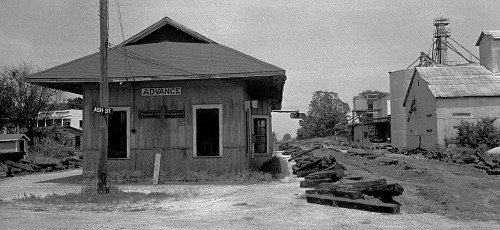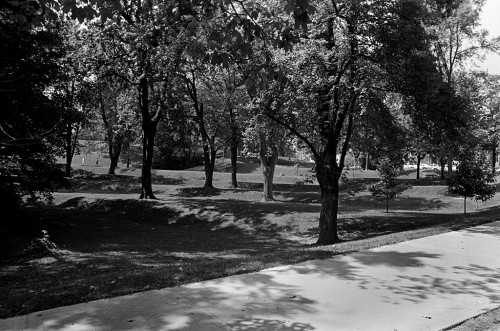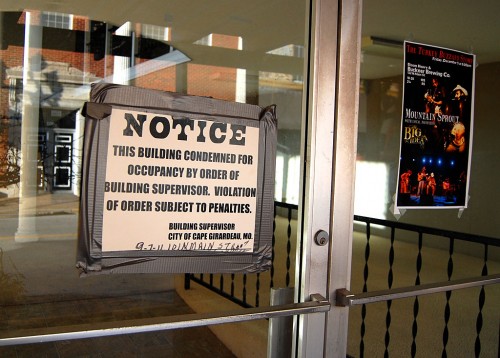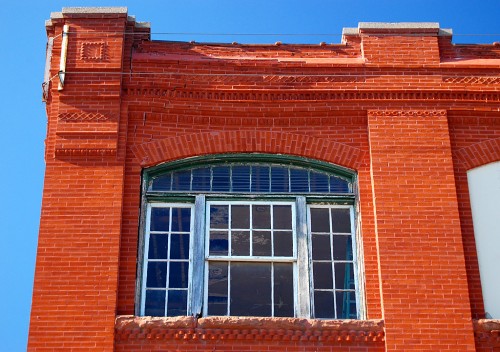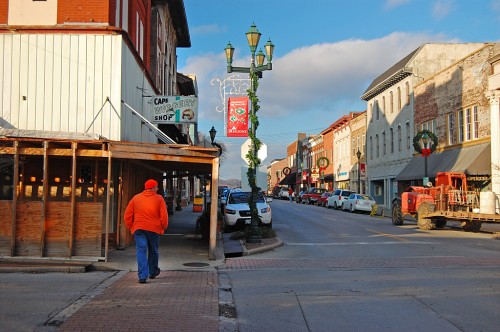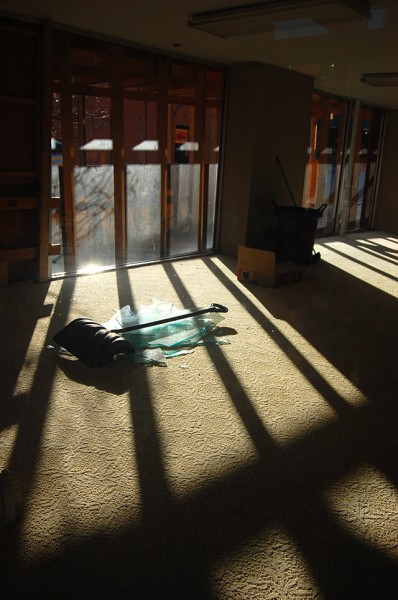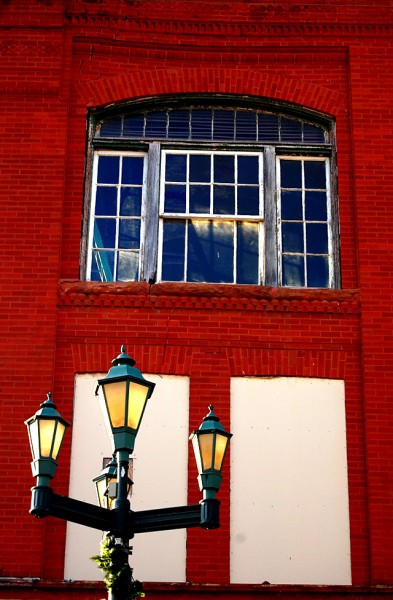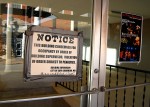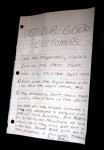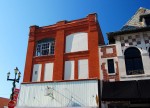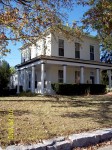Happy Birthday, Girl Scouts! I understand you hit the Big 100 today. Want to hear something that will rock you back? These Brownies and Girl Scouts, who toured The Southeast Missourian in 1965 or 1966, weren’t too far off from having been around to celebrate the 50th anniversary of the organization. Now they’ll be able to light double the number of candles.
If you were a regular reader of the Saturday Youth Page, the photo above should look familiar to you. One of my jobs was to edit the weekly page, so I took a photo from the tour and made it into one of the standing page sigs. I always liked it because I knew it gave some of the bigots heartburn to see kids of different races “mixing.”
Newspaper tour groups
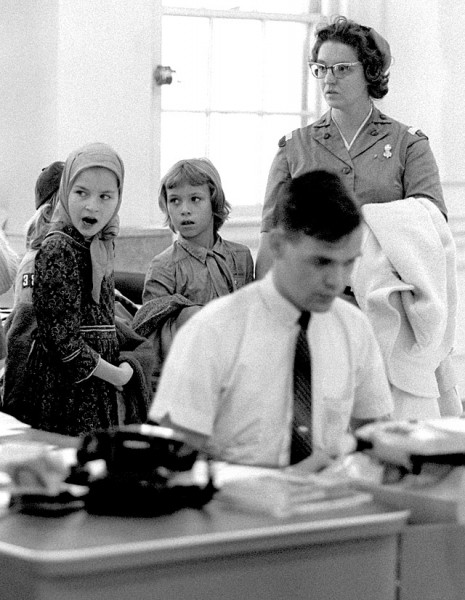 Cop reporter Dan D. Whittle is doing his best to look important and ignore the group standing around him.
Cop reporter Dan D. Whittle is doing his best to look important and ignore the group standing around him.
A lot of newsroom folks hated the tour groups, but I enjoyed having them come back to the photo department at The Palm Beach Post.
If I wasn’t busy, I’d take them on a tour of the darkrooms, where the highlight was going through the revolving light trap that would let you go from the lighted hallway to the dark print room without interrupting any work that was going on. You’d revolve a cylinder until an opening showed up, you’d step inside and rotate it until the opening reached the darkroom, then you’d step out. With practice, you could do it without slowing down.
The farmer and the magic room
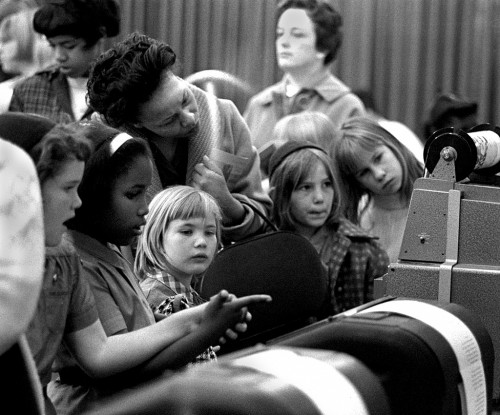 I’d tell the kids that the experience was a little like the farmer who saw his first elevator when he took his family on a visit to the big city.
I’d tell the kids that the experience was a little like the farmer who saw his first elevator when he took his family on a visit to the big city.
He watched mystified as a door would open, people would enter a small room and the door would close. When the door opened again, the room would be empty. This went on for quite some time while he tried to figure out what was happening to the people.
Finally, an elderly woman entered the magic room. The door closed and a few seconds later a beautiful young woman stepped out. There was a brief pause, then the farmer turned and said in a hushed voice, “Son, quick. Go fetch your momma.”
Darkroom tricks
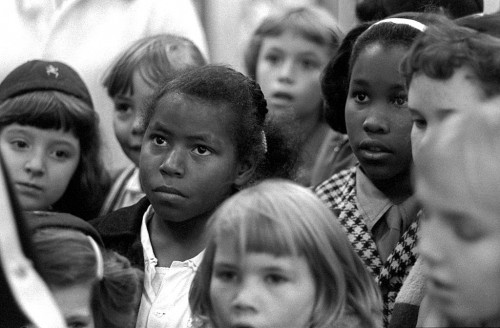 Once they made it through the revolving door, I’d usually have groups of them put their hands on a piece of photographic paper, then I’d turn the overhead room lights on and off to expose it. I’d toss the “blank” paper into the developer and let them see a reverse image of their hands pop up. Even high school kids were impressed, and it made for a nice souvenir to take home.
Once they made it through the revolving door, I’d usually have groups of them put their hands on a piece of photographic paper, then I’d turn the overhead room lights on and off to expose it. I’d toss the “blank” paper into the developer and let them see a reverse image of their hands pop up. Even high school kids were impressed, and it made for a nice souvenir to take home.
If we were lucky enough to catch a photographer with prints from an assignment that was going to run the next day, I’d introduce the shooter, have him or her show the kids the pictures, tell them a little about what how they were taken, then tell them to look for the shots in tomorrow’s paper.
I thought it was important for them to realize that real people produced the art that got pitched in a puddle in their front yard. It might encourage them to keep reading the paper. Based on what’s happening to newspapers today, I guess I must not have been too effective.
Earlier Girl Scout stories
- Two photos of Girl Scout activities in the 1960s
- Girl Scouts in Civil Defense drill at the Arena Building
- Brownie Troop 3 on Themis Street
Tour group photo gallery
I tried to print as wide a variety of photos from the tour as possible (including the little girl picking her nose. I hope her kids spot it.). Click on any photo to make it larger, then click on the left or right side of the image to move through the gallery. Happy Birthday, Girl Scouts of America.



